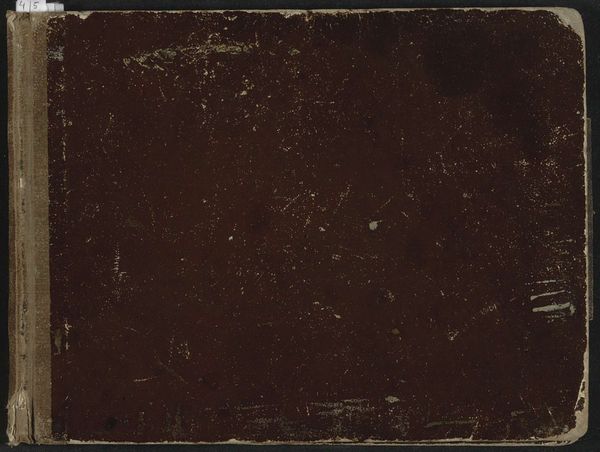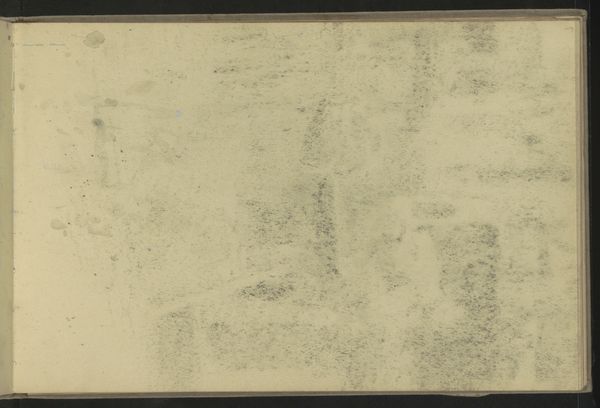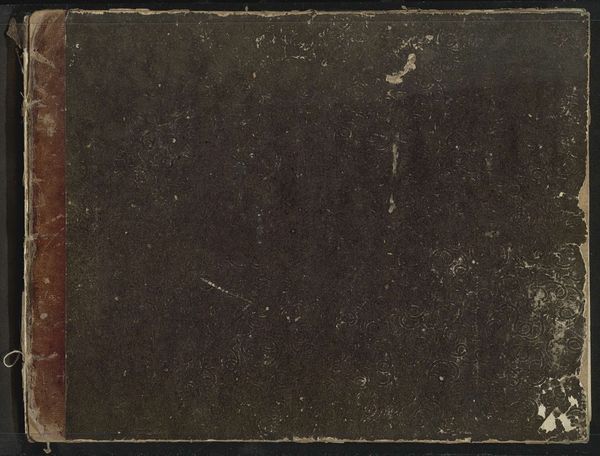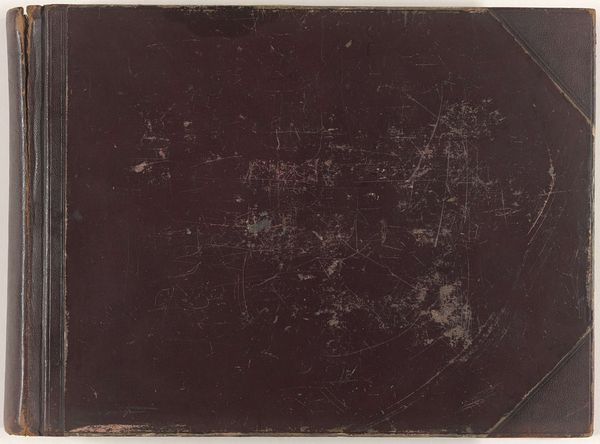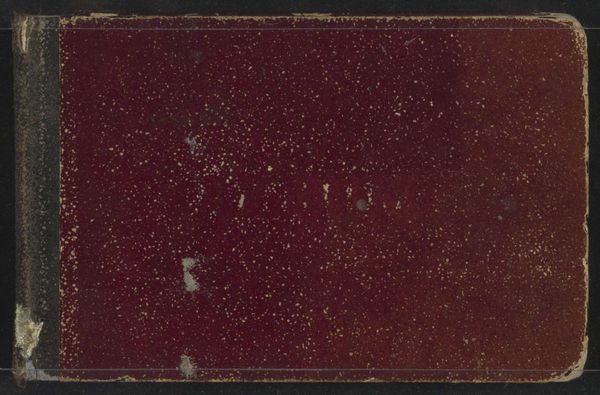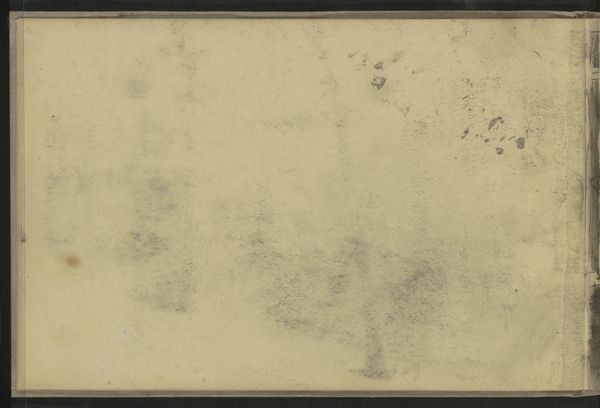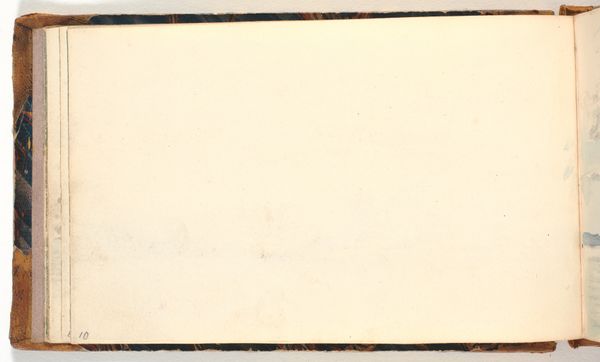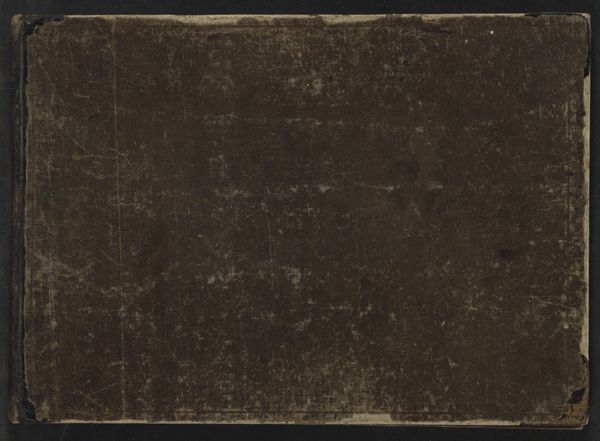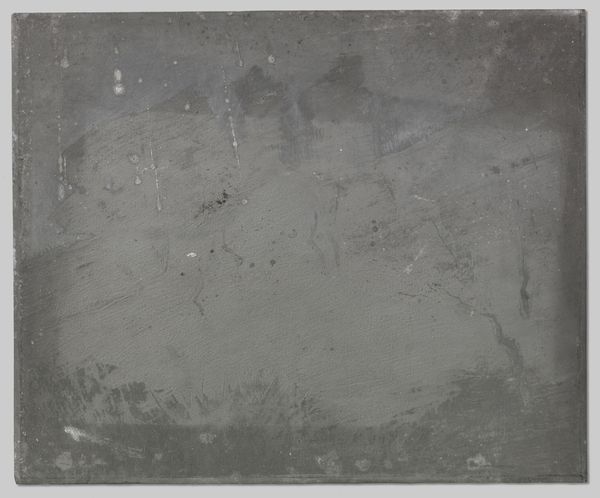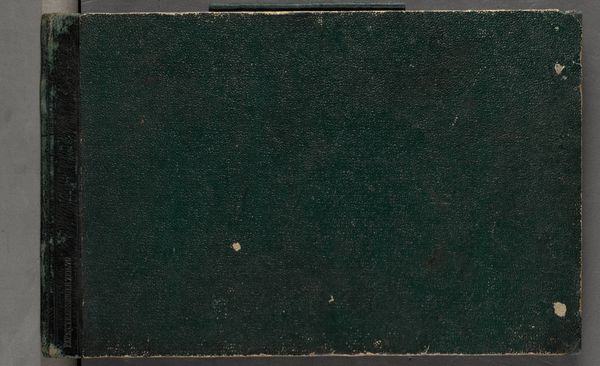
drawing, mixed-media, coloured-pencil
#
drawing
#
mixed-media
#
coloured-pencil
#
16_19th-century
#
coloured pencil
#
mixed medium
#
mixed media
Copyright: Public Domain
Curator: So, let's delve into Emil Lugo's "Italienisches Skizzenbuch" from 1872, currently held at the Städel Museum. It is a mixed-media drawing incorporating colored pencil elements. What are your initial thoughts on its appearance? Editor: It has a strangely compelling simplicity to it. I'm drawn to the rough texture and the apparent age of the sketchbook itself. The visible wear and the faded, almost ghost-like lettering—they speak to the physical act of making, and the passing of time impacting the very material of art. Curator: Absolutely, and if we consider the Italian context of its creation, the sketchbook can be viewed as a portable site of cultural negotiation. What narratives might Lugo have been engaging with as he traversed Italy? How might his gender or class position influenced what he chose to document? Editor: From a materialist perspective, consider the accessibility of this medium at the time. A sketchbook offered an immediacy—colored pencils and mixed media being relatively easy to transport, allowed Lugo to capture observations quickly, connecting labor directly to the landscape. What do we know about the paper itself? Was it locally sourced? The production would directly link the artwork to broader economies. Curator: That is fascinating. Think also about how Italy in 1872 was a newly unified nation, rife with internal contradictions and grappling with its identity. Lugo’s sketches would not have been neutral; they participate in shaping perceptions, conscious or unconscious, of what "Italy" represented. His very act of sketching could be construed as an act of cultural appropriation. Editor: Interesting point about appropriation. It raises the question of the social implications embedded in even the seemingly innocent act of sketching. How are we implicated in the creation, labor and even the marketing and distribution? We consume images of 'Italy' today – postcards, advertisements – Lugo's work forms part of that production line. Curator: Precisely, and considering Lugo within broader artistic networks – who was he studying with? Who was he exhibiting alongside? Understanding these affiliations further situates him and the sketchbook within a matrix of power dynamics operating in the art world. The materiality of the work supports this point; Lugo’s decision to create mixed media piece is also critical, allowing us a rare view into how artistic trends are materializing as identity formations. Editor: The intersection of the practical constraints of artistic production and those socio-political concerns feels potent when considering art in that era. Thanks to this discussion, it has changed the way I now view even what appear as common artworks like these sketchbooks. Curator: Agreed. Thinking through the layering of social narratives that underpin the object is an excellent first step towards fully appreciating its value.
Comments
stadelmuseum almost 2 years ago
⋮
Emil Lugo used this landscape sketchbook with the faded imprint “Album” on his first trip to Italy from 1871 to 1873, when he was accompanied by his artist colleague Max Wilhelm Roman (1849‒1910). The drawings, partly with dates and locations, document Lugo’s stays in and around Rome from April to August 1872. Among other places, Lugo captured the view of the Lateran, visited Villa Borghese (April), then travelled to Tivoli (May to June), Subiaco (June), Civitella (July) and Olevano (August). His pencil-drawn landscape and city views, which he did with different degrees of precision, allow us to draw conclusions about the artist’s working methods. Lugo first captured what he saw in brief outlines before he expanded on what he was particularly interested in. Often, therefore, his drawings only show a reduced depiction of the foreground or background. Lugo made full use of the book’s landscape format for the composition, sometimes he even developed the drawing over a double page. For this, he usually chose a slightly elevated position. Individual framed compositions may well have been intended as sketches for later paintings. The artist left the last pages blank.For a full sketchbook description, please see “Research”.
Join the conversation
Join millions of artists and users on Artera today and experience the ultimate creative platform.
